Cat Eye Reflections: Guide to Choosing Your Photography Equipment
Have you ever clicked a photo of a cat only to be surprised by the outstanding glow of the cat's eyes staring back at you? That eerie shine can't be just spooky as it's a part of the science. The cool parts of those eyes are to help you assess the performance of the photography gear.
The cats' eye reflections could help you learn about the shortcomings and strengths of the camera and lighting setup. If you're a cat lover with a DSLR or a pet photography pro, reading the eyes of the cats in the photos could sharpen your gear games outstandingly, and this post will provide you with all the details you're seeking.
Part 1. The Science Behind Cat Eye Reflections
Cats come up with a biological superpower, as they can see in the dark, courtesy of the structure of the eyes, which is called tapetum lucidum. This reflective and thin layer tends to sit behind the retina and could be like a mirror, reflecting the light through the retina to help the cats access a second chance to absorb it. This aspect makes the cats effective night hunters, causing the signature eye effect in the photos.
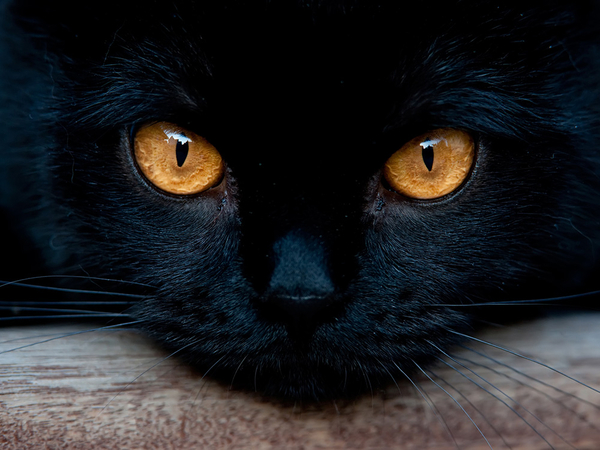
How it works
When a bright light or flashlight hits the eyes of a cat, the light reflected straight back at the camera will be reflected by the tapetum lucidum. Humans don't have this feature, so the red eye in human portraits is due to the blood vessels in the retina, but the eyes of cats tend to flash yellow, green, or blue depending upon the eye color, lighting, and angle.
Why do these reflections matter in photography?
These eerie reflections could tell you a lot about the gear. Overexposure, color distortions, and harsh glare often show up clearly in the delicate highlights of the cat's eyes. If you're familiar with what to look for, you'll be able to use the glowing reflections as the litmus test for the camera's exposure control, your lighting choices, and lens coating quality.
Part 2. Evaluating Camera Gear through Cat Eye Reflections
After understanding the basics of the science, it's now time to get practical and turn the feline glows into diagnostic tools for the photography kit.
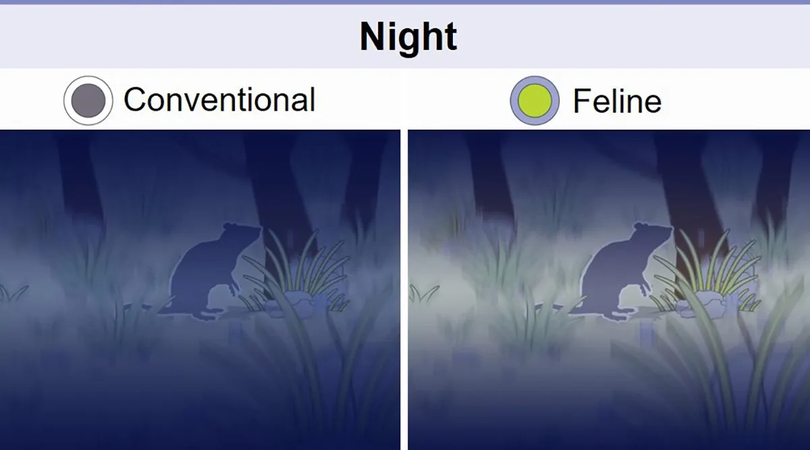
Indicators in the Cat Eye reflections
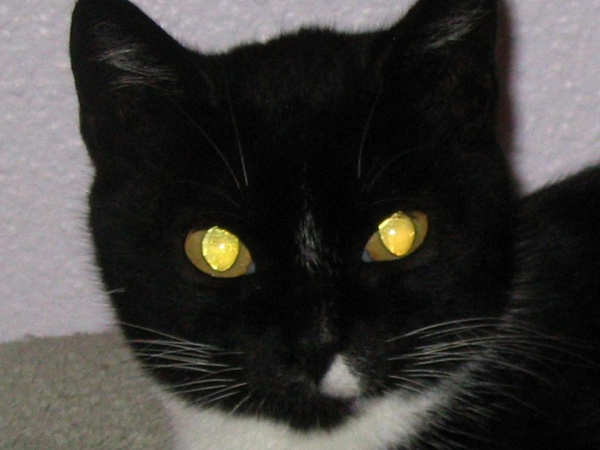
1. Exposures Balance
Too white or bright reflections often indicate the powerful flash of overexposure. Beyond that, dim color muted reflections also reflect the weak lighting and underexposure.
2. Ghosting and Glare
If multiple reflections, strange rings, and streaks of light are visible in the eyes, this will indeed point to poor lens coatings or lower-quality glass. High-end lenses with anti-reflective coatings will create controlled and clean highlights.
3. Color accuracy
Although cat eye reflections could vary in color, they are usually overly saturated greens or odd blue tints, which might also reflect poor chromatic aberration and white balance.
4. Sharpness and Clarity
Well-defined and crisp reflections will suggest good lens resolution and focus. On the other hand, distorted or blurry reflections may be of low optimal quality or poor optimal quality.
Lighting conditions and their effects
Different lighting setups could alter how the cat eye reflections appear.
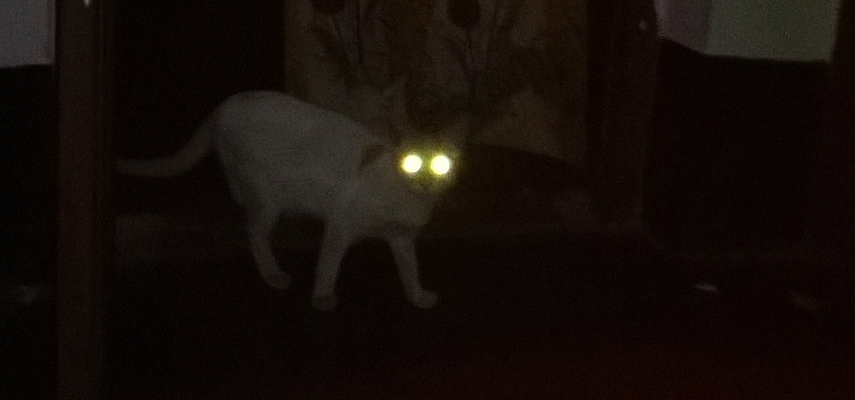
1. Studio Lighting
Controlled lighting empowers the softening of harsh reflections, as diffusers or soft boxes could reduce the glare. Catch lights in the eyes add depth and personality.
2. Natural Light
Late afternoon or morning light is bound to create the warm and subtle reflections without overwhelming glare, which is absolutely brilliant for the texture and true eye color.
3. Low light/ Flash Photography
It is where the tapetum lucidum comes into play. Flash golds the ability to cause the most intense reflections. Thus, you'll need to use the indirect lighting or bounce flash to manage the glare.
Part 3. Enhancing Your Cat Photo Quality with HitPaw FotorPea
After clicking the cat images, if you aren't happy with the result of the photos, try out HitPaw FotorPea to elevate the quality of the cat images. It is an AI-powered photo quality enhancer that empowers users to enhance multiple cat images simultaneously. While performing the photo-enhancing credentials, this tool doesn't insert the watermark in the photos.
Thus, whether you want to eliminate the blur from the images, reduce the noise from images, colorize the black and white cat images, or add light to the pictures, HitPaw FotorPea will surely come in handy.
Features
- Best way to enhance the cat images
- 9 AI models to improve the image quality significantly
- Makes it simple for newcomer’s courtesy of a simple user interface
- Works on Mac and Windows
- Enlarge and upscale the cats instantly
- Regular updates make the photo-enhancing process smooth and attractive
How can images be enhanced through HitPaw FotorPea?
Step 1: Start the HitPaw FotorPea on the computer and click on Enhance Photo Now.
Import the cat photo you want to enhance.

Step 2: Click on the Upscale Model to apply it to the image and then select the significant credentials of the upscale model.
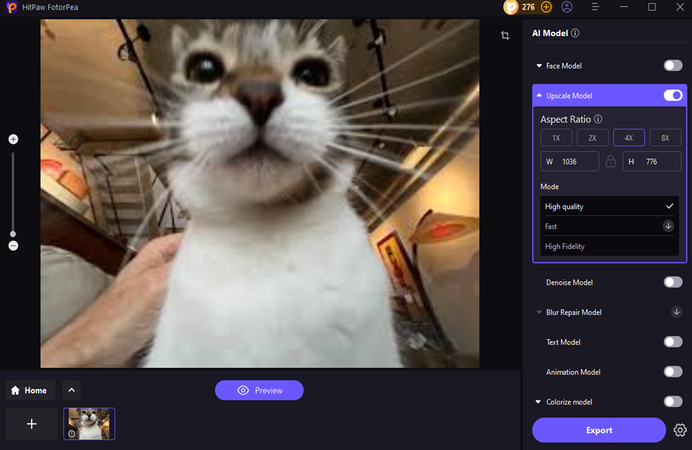
Step 3: Apply the Upscale Model by selecting the Preview. After a few moments, you'll be able to see the results of the Upscale Model.
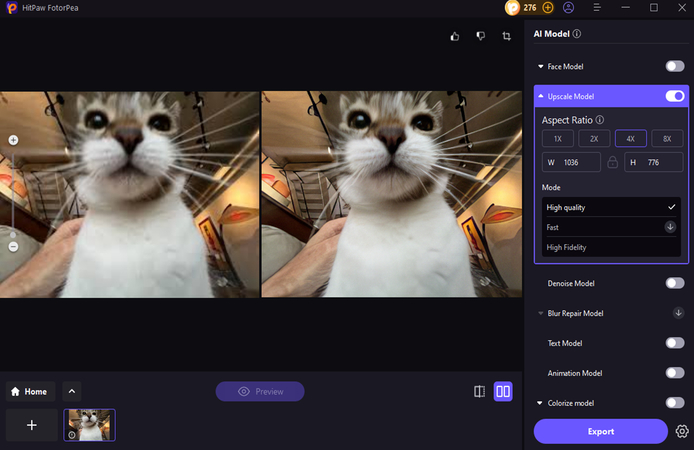
Step 4: If you want to apply another AI model to the images, you'll need to select the Face Model and then choose the Soft, Soft (V2), or Sharp option.
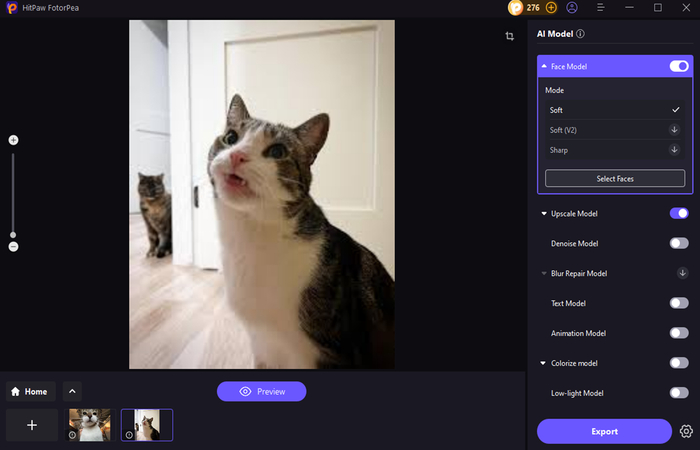
Step 5: Tap on the Preview icon to see the results of the Face model. If you're happy with the result after previewing the images, tap on the Export icon.

Part 4. FAQs for Cat Eye Reflections
Q1. How do cat eye reflections help in choosing camera gear?
A1.
Cat eye reflections are more than quirky side effects; they tend to act like tiny mirrors that could reflect the quality of the photography setup. By analyzing and assessing how the cats' eyes respond to different camera settings and lighting, you can evaluate exposure accuracy, color handling, and glare control clarity.
It remains a subtle but efficient way to gauge the gear's performance in low light and real-world scenarios.
Q2. Do changes in glow color always indicate health problems?
A2. No, a change in the glow color is due to the camera white balance, eye color, and lighting angles. However, if you've noticed one eye glowing differently than the other or a quick change in the eyes under consistent conditions, you must check it with a vet. Although the reflections are harmless photographic effects, they could hint at eye issues like inflammation and cataracts, so you must trust your instincts and contact a professional if something looks off there.
Bottom Line
Apart from looking cool, cat eye reflections are a hidden diagnostic tool for photography gear. From the lighting setup to lens quality and exposure balance, these little glows will tell you a lot about what's working in the current setup. By reading about the reflections of the cat's silly moments you'll elevate the photo game brilliantly.
HitPaw FotorPea is also here to enhance cat photos courtesy of its 9 AI models and outstanding AI-powered photo-enhancing credentials. Apart from supporting batch enhancing, HitPaw FotorPea also ensures that the quality of the images is maintained during image enhancement.










 HitPaw Edimakor
HitPaw Edimakor HitPaw VikPea (Video Enhancer)
HitPaw VikPea (Video Enhancer) HitPaw Univd (Video Converter)
HitPaw Univd (Video Converter) 

Share this article:
Select the product rating:
Daniel Walker
Editor-in-Chief
This post was written by Editor Daniel Walker whose passion lies in bridging the gap between cutting-edge technology and everyday creativity. The content he created inspires the audience to embrace digital tools confidently.
View all ArticlesLeave a Comment
Create your review for HitPaw articles